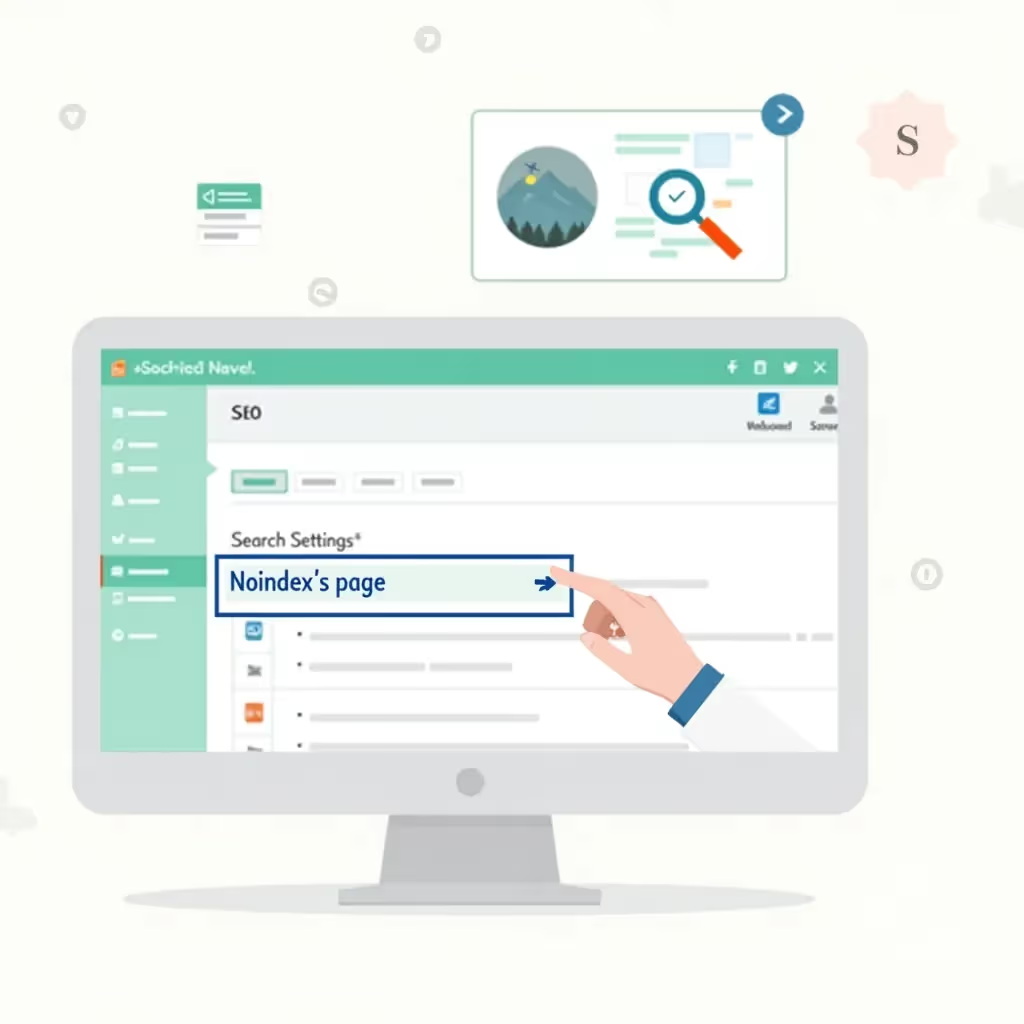In web design and user experience (UX), navigation remains one of the principal concerns. One particular tool used to aid in seamless navigation is the breadcrumb trail. While most people are familiar with breadcrumbs as the trail of crumbs left behind by Hansel and Gretel to avoid becoming lost in the woods, web designers have appropriated this method into digital navigation systems. A breadcrumb trail visually tells users where they are in a site’s structure, helping them understand the relationship between web pages and facilitating easy backtracking to previous sections of the website.
What are Breadcrumbs in User Interface Design?
Breadcrumbs, in the context of user interface (UI) design, are a secondary navigation aid displayed at the top of the webpage. They show users the path back to the homepage or previous sections by presenting hyperlinks in a clear and hierarchical format. This series of links is beneficial for deep or hierarchical websites because it gives users an instinctive understanding of their location within a website’s structure.
Here’s a simple example of how a breadcrumb navigation appears on a typical e-commerce site:
Home > Categories > Electronics > Mobile Phones > iPhone
In this example, users can click on any part of the breadcrumb trail, such as "Categories" to return to the category page or "Electronics" to view other electronics products. This system serves as both a roadmap and a navigational shortcut, enhancing usability by giving users multiple navigational choices.
Types of Breadcrumbs
Not all breadcrumbs are the same. Typically, they come in three different types that are used depending on the structure of the website and the design goals:
- Location-based Breadcrumbs: These are the most common type of breadcrumb. They show users their position or location relative to the rest of the website’s hierarchy. For example, on an e-commerce site, a breadcrumb trail may look like this: Home > Men > Shoes > Sneakers.
- Attribute-based Breadcrumbs: This type of breadcrumb conveys the attributes or metadata of the specific page’s content. They are mainly used in e-commerce, where products can be grouped by different characteristics. For example: Home > Electronics > Mobile Phones > Samsung > Galaxy S21.
- Path-based Breadcrumbs: These breadcrumbs show the actual route the user has taken to get to a certain page. This is less common and can become confusing if a user navigates via multiple steps or non-linear paths to arrive at the current page. Path-based breadcrumbs typically resemble browser history.
Why Are Breadcrumbs Important?
Breadcrumbs are a simple yet powerful tool enhancing many aspects of user experience. Here are some of the advantages of using breadcrumbs in web design:
| Benefit | Description |
|---|---|
| Enhanced Navigation | Breadcrumb trails help users navigate the website more efficiently by giving them a clear sense of direction. Users can freely jump back to earlier categories or sub-categories without needing to repeatedly press the "back" button of their browser. |
| Reduced Bounce Rates | By showing users an easy way to backtrack or explore the site, breadcrumbs can lower bounce rates. Visitors are more likely to continue browsing if they can find their way around without frustration. |
| Improved User Experience | Breadcrumbs support discoverability and usability by simplifying navigation. This reduces the cognitive load that comes with exploring large or hierarchical websites, making users less likely to feel overwhelmed. |
| SEO Benefits | Breadcrumbs also positively impact search engine optimization (SEO). Google and other search engines can use breadcrumb trails to better understand the structure of your website, potentially improving rankings. Additionally, it can enhance listings with “breadcrumb trails” shown directly beneath organic search results. Learn more about Google’s approach to breadcrumbs. |
Best Practices for Using Breadcrumbs
While breadcrumbs can significantly improve navigation, they need to be implemented effectively to bring true value. Poorly planned breadcrumb navigation can hurt UX instead of improving it. Here are some best practices to keep in mind:
- Keep Breadcrumbs Simple: Show only the necessary parts of the hierarchy. Overuse of breadcrumbs can clutter the page and overwhelm users. For instance, just showing the main categories and subcategories is enough for most websites, rather than showing every minor step along the trail.
- Use Breadcrumbs Consistently: Don't toggle breadcrumbs on and off between various pages. They should remain a constant feature across the entire website, particularly where there is a deep page structure.
- Place Breadcrumbs Prominently: Breadcrumb trails usually sit right below the header or above the page's main content. You need to ensure users can recognize and interact with it without difficulty. Placement is key for its usability.
- Don’t Rely on Breadcrumbs as Sole Navigation: Breadcrumbs are a supplementary navigation tool and should never be the primary way users explore your site. Ensure there’s a robust primary navigation, like a menu or sidebar, to support users.
- Use the Right Separators: Traditionally, “>” has been used as the separator to indicate a breadcrumb hierarchy. While you can experiment, make sure your characters are intuitive and represent a clear hierarchy to avoid confusing the user.
When Not to Use Breadcrumbs
Even though breadcrumbs are useful in most scenarios, there are some cases where they might not be beneficial. If your website is flat or has a shallow structure, breadcrumbs may offer little value. In a flat structure, users can easily navigate between pages using the main menu, and having breadcrumbs may only create unnecessary clutter.
An example of a flat structure is a single-page application or a simple website with only a few sections. These types of websites typically don’t have complex hierarchies, making breadcrumb navigation redundant. Thus, breadcrumbs should generally be reserved for large websites with a clear, multi-level, hierarchical structure.
Common Mistakes with Breadcrumb Navigation
Although breadcrumbs are simple in theory, they can still be implemented incorrectly if not carefully thought through. Some common mistakes that you should avoid include:
- Using the breadcrumb trail as your sole navigation: Breadcrumbs are supplementary and should never replace your primary site navigation system.
- Making them hard to find or read: For breadcrumbs to work effectively, they must be accessible. Placing them above the fold and choosing a readable font size and color contrast is essential.
- Making breadcrumbs too long: Lengthy breadcrumb trails can overwhelm the user. Stick to the essential parts of the path.
- Using confusing symbols or separators: Although some designers experiment with unconventional separators (like slashes or arrows), remember that simplicity is key. Users are accustomed to the standard “>” symbol, which should be used for clarity.
Popular Examples of Breadcrumb Navigation
Many widely recognized websites use breadcrumbs effectively to guide users through large amounts of content or deep hierarchical structures. Here are a couple of website examples:
- Amazon: One of the largest e-commerce websites on the planet, Amazon uses breadcrumbs to help customers navigate through product categories effectively. If you’re browsing for a product in a deep category, you can easily backtrack to any larger category like “Books” or “Electronics”.
- The New York Times: The New York Times implements breadcrumbs to help readers identify which section (e.g., Technology, World, Sports) an article belongs to, allowing easy navigation back to general categories or headlines.
Conclusion
Whether your website is content-heavy or features structured categories, breadcrumb navigation is worth considering. Cold, simple, yet effective, breadcrumbs offer increased usability, reduced bounce rates, and better SEO performance. They’re a navigation tool that aligns intuitively with users' expectations for how they browse, making it easier for users to explore, backtrack, and fully experience your website.
In the constantly evolving field of UX design, small positive changes, like offering breadcrumb navigation, contribute significantly to how users interact with digital spaces. While they may seem negligible, properly implemented breadcrumbs enhance the user journey, promoting engagement and satisfaction across multiple types of websites.





